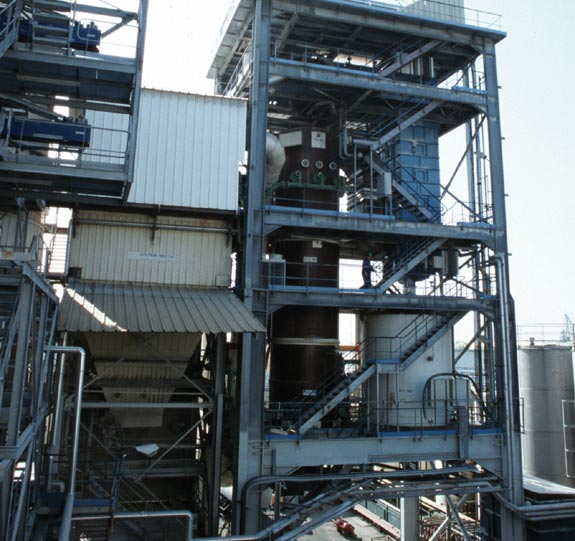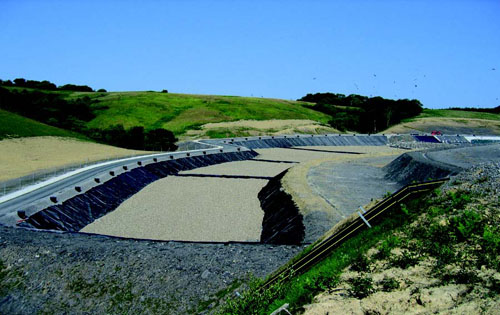
It is rare for waste to be collected following response to a chemical spill. Most of the time, the pollutant spreads rapidly in the marine environment and/or in the atmosphere, making it impossible for response personnel to contain it.
When the owner of the product has been identified, he is requested to manage the collected waste.
Upon their arrival in the port of Brest (France), the three tanks lost at sea from the container ship Lykes Liberator, in 2002, were returned to the manufacturer to be dealt with (see Operational Guide "Containers and Packages Lost at Sea").
If the cargo recovered during response is unspoiled, it can be transported to the industries concerned for normal use, after having undergone the relevant legal procedures.
The cargo of butadiene• from the gas carrier Igloo Moon ((1996, Florida) was sold after having being transhipped onto the Selma Kosan and sent back to the continent (see response to bulk cargoes).
The possibilities of upgrading waste will depend on three factors: the type of waste, the degree of pollution and the existence of suitable upgrading solutions. Several options exist, such as: distillation and refining• for solvents•, energy production for certain flammable wastes and recovery for metals.
It is possible to use micro-organisms that are able to break down certain chemical products such as chlorinated compounds (e.g. tetrachloroethylene) or nitro compounds (e.g. trinitrotoluene•, also known as TNT), alcohols or organic acids•.
Collected waste can be sent to special industrial waste incineration plants. In addition to energy recovery•, this option has two other advantages: it decreases the volume of waste and reduces the hazardous nature of the substances involved.
The atmospheric and aqueous discharges generated by this activity undergo different treatments and are strictly controlled before being released into the environment. Meanwhile, incineration residues, such as mud• and clinker•, are sent to specialized landfill sites.

Some waste is neutralized by inerting. An initial solution involves incorporating it with a mineral substance such as lime, cement, clay or activated carbon•. Through this process, the waste forms clusters of varying sizes. This type of treatment is costeffective but has the drawback of increasing the volume of waste.
There exists an alternative, known as vitrification, whereby the waste is melted at a high temperature (between 1,200°C and 4,000°C according to the process) to form a glass matrix. It is then molded into ingots or granules. This technique requires investments in substantial equipment and involves non-negligible energy consumption. It does however considerably reduce the volume of waste. Inerted waste can in some cases be buried.
Vitrification is the only industrial technique that can be used to definitively neutralize asbestos• fibres present in waste. This is however a costly solution. Treating one tonne of asbestos-containing waste costs 1,200 euros (around CAD$1,600) while disposal at a landfill site certified to receive such waste costs half as much.
Waste burial is subject to increasingly tight regulations. For instance, in France, only so-called ultimate waste, i.e. waste that cannot be recycled or upgraded, can be sent to ultimate waste storage sites.
These sites are made up of storage units known as cells. Each cell is made watertight to prevent contamination of the subsoil and groundwater•. A drainage network is set up to evacuate leachate• to a treatment pond. When the cells are full, they are sealed with a watertight covering and vegetation is planted over the top. Environmental checks are conducted for a 30-year period after their use.

Special industrial waste is incinerated in furnaces in which the temperature can reach up to 1,100°C. In comparison, this is almost as hot as molten lava when it erupts from the crater of a volcano.
